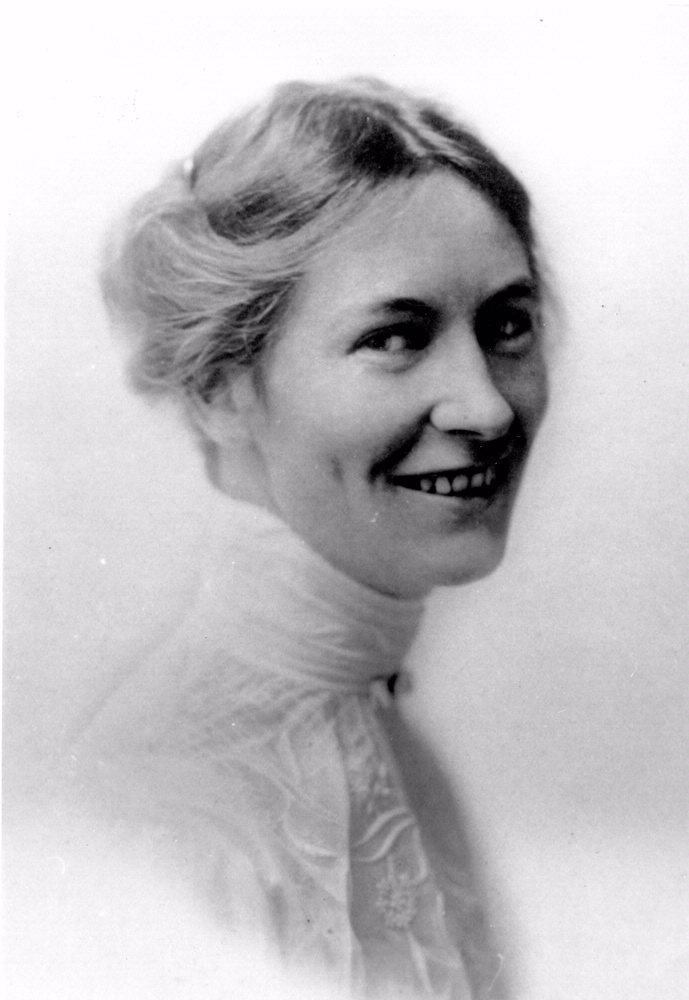On June 24, we announced that the National Air and Space Museum will receive a $6 million gift from the Thomas W. Haas Foundation to support the Public Observatory’s educational programs. With seed funds from the National Science Foundation (NSF), the Observatory first opened in 2009 as part of the Museum’s celebration of the International Year of Astronomy. Since then, visitors and students have experienced astronomy through our educational activities while the observatory enjoyed support from the NSF and the Goodrich Foundation. With the new gift from the Thomas W. Haas Foundation, the observatory will be refurbished, and it is now named the Phoebe Waterman Haas Public Observatory in memory of Thomas Haas’ grandmother. The Museum’s astronomy education program, with the observatory as its centerpiece, will be active in sharing astronomy with Museum visitors and students for years to come.
So, who was Phoebe? We are learning more each day, but much of what we now know comes from an article by Thomas R. Williams that was published in The Journal of the American Association of Variable Star Observers in 1991. Phoebe was a woman who loved astronomy and pursued it to a level reached by few women of her time. She was one of the first women in the United States to earn a doctorate in astronomy. Her PhD was awarded by the University of California, Berkeley 100 years ago, on May 14, 1913. At the time when she was a student, women who were professionally involved in the field of astronomy worked as computers, performing data analysis and making calculations to support the work of research astronomers, all of whom were men. A few years after graduating from Vassar with degrees in mathematics and astronomy, Phoebe worked at the Mt. Wilson Observatory in California as a computer, classifying and reducing the spectra of stars and studying the rotation of the Sun. She worked with many leading astronomers of the day: George Ellery Hale, Walter S. Adams, J.C. Kapteyn, and Harold D. Babcock. But she realized that she wanted to make her own observations and analyze the data herself. She wanted to be a fully professional astronomer, because she really loved the science. And so she did. Phoebe went to graduate school at the University of California, Berkeley and made observations at the Lick Observatory near San Jose. She was perhaps the first woman to operate a major telescope — the 36-inch refractor at Lick — to gather her own data for her research program. In fact, the spectrograph she used with the 36-inch refractor is on display here in the Explore the Universe gallery. Phoebe’s research was a study of the spectra of Class A stars. Hers was the first dissertation by a woman published at Lick Observatory, and her degree was awarded on the same day as another female classmate of hers. Upon completion of her doctorate, Phoebe was on her way to work at the Argentine National Observatory at Cordoba when she met businessman Otto Haas. Not long after, they married, and her life’s path shifted course from professional astronomer to wife and mother.
 Phoebe used the Brashear spectrograph on the 36-inch refractor at Lick Observatory to complete her research about stellar spectra.
Phoebe used the Brashear spectrograph on the 36-inch refractor at Lick Observatory to complete her research about stellar spectra.
Phoebe’s completion of a PhD in astronomy was, indeed, a major accomplishment for a woman in her day. That she chose to marry and not continue on as a scientist is also revealing of her times, and we hope to learn more about how she made this decision, and how she felt about it in later years. But we at the observatory are just as excited that she continued to be involved in astronomy and shared her love for it with her children, a devotion every bit as significant, we feel, as choosing to be engaged in astronomical research professionally. Phoebe purchased a telescope in 1927 and began observing the night sky again. She taught her sons astronomy and shared views through her telescope with friends and family. She also made observations of variable stars — stars that change in brightness — and reported them to the American Association of Variable Star Observers (AAVSO), reviving her involvement in observational astronomy and data collection. Later on, she supported the AAVSO by performing calculations of the brightness of variable stars, as well as by making a financial gift each year.
 Astronomy educators Geneviève de Messières, Shauna Edson, and Katie Nagy in front of the Phoebe Waterman Haas Public Observatory.
Astronomy educators Geneviève de Messières, Shauna Edson, and Katie Nagy in front of the Phoebe Waterman Haas Public Observatory.
The thing that resonates with us as astronomy educators is that there are many ways to be involved in astronomy, and Phoebe is an example of nearly all of them at some point in her life: studying astronomy in school, taking observations with telescopes and analyzing the data, working at an observatory professionally, amateur stargazing in the back yard, teaching children, family, and friends about astronomy, making scientific observations and performing calculations to participate in citizen science efforts, reading about the latest discoveries in astronomy, and even donating money to support research efforts and astronomy education. We hope you will join us at the Phoebe Waterman Haas Public Observatory — your place to be involved in astronomy, whether by making an observation through a telescope, talking with others who share your interests, or even serving as a volunteer to help us share an enjoyable observing experience with others. You’ll be in good company with the over 170,000 other people from around the world who have already observed with us, and millions more who have looked through a telescope at some point in their life. We are only starting our own journey, getting to know Phoebe. Join us!
Katie Nagy is the astronomy education program manager at the National Air and Space Museum's Phoebe Waterman Haas Public Observatory.
